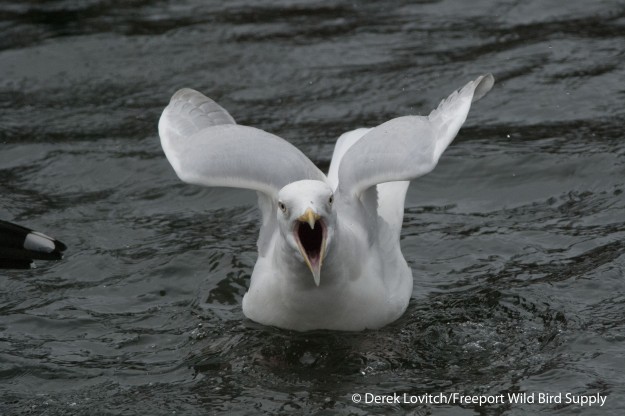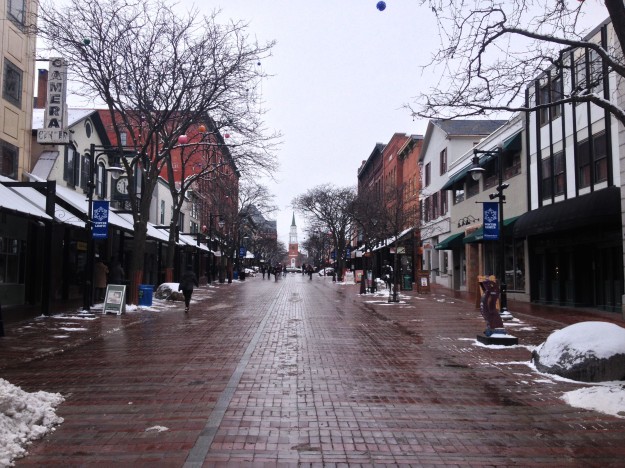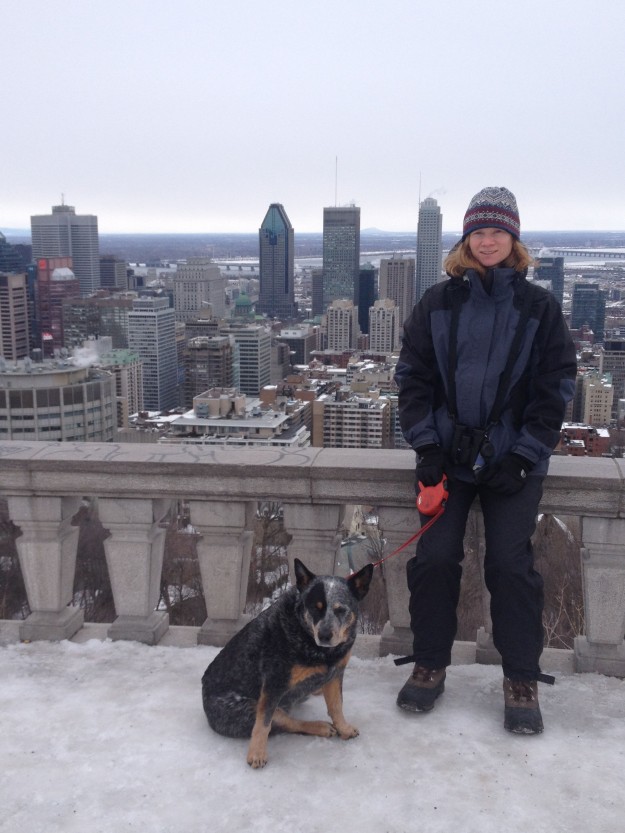A great day of birding on Friday included new arrivals and migrant waterfowl around Scarborough Marsh (oh yeah, and two more Snowy Owls), continuing good numbers of white-winged gulls in Portland Harbor, and “quality time” with “Westie,” the still unidentified white-winged gull in Westbrook (highlights posted to the store’s Facebook page as usual).
As for this frustrating, fun, and challenging obsession of mine with the “Westbrook Gull,” I won’t rehash the entire story here, but for that please visit this blog entry from January.
During our outing on Friday, Kristen Lindquist and I enjoyed my best photo session of the season with the bird. I’ve posted a variety of photos of the bird into the growing gallery of photos of this bird on our store’s Facebook page, here.
But here I want to discuss a few of the more pertinent images, and explore some of the still-unanswered questions about this bird. First and foremost, and perhaps the single most critical factor in being able to simply dismiss this as an Iceland Gull – likely (due to its pure white wingtips and pale mantle) of the nominate subspecies glaucoides – is the fact (not subject to interpretation) that the wings are short: only two primaries extend beyond the tail, as with Glaucous Gull, and unlike the long, four-primary extension of Iceland Gull of either subspecies. No photo of this bird in four years has shown the typical “long-winged” appearance of Iceland Gull of either subspecies.

It’s impossible to ignore this significant structural feature, but of course, we never base an identification (or lack thereof!) on any one particular characteristic. Unfortunately, nothing else is this clear and distinct.
As the bird reached adulthood, I had hoped that the orbital ring – the narrow band of bare skin that surrounds the eye – might yield a clue, and now that we are in late spring, the bird’s head is pure white and the brighter bill suggests that it is now in “high breeding” (or at least close to it), the color should be as true as possible. Howell and Dunn list the orbital ring of Larus glaucoides glaucoides as pinkish to red, turning brighter reddish by spring. L.g kumlieni is described as purplish-pink to reddish, brightening by spring. As for Glaucous Gull: orange to pale pink flesh, brightening in spring to “orange or chrome yellow.” As for Westie?

I call that simply “pink.” But does that only mean that this bird is not in high breeding yet (which is suggested by the still-brightening yellow of the bill)? If this is as colorful as it gets, it’s a significant strike against a Glaucous Gull, or at least a pure one, but it is not clinching for Iceland Gull of either subspecies, either.

Westie’s dominance of the park leads to aggressive behavior towards other gulls, especially anything of similar size or larger. While the aggressive behavior is more typical of Glaucous Gulls, I think the rather unnatural environment, along with the decided “home-turf’ behavior negates the value of this circumstantial evidence. What it does mean, however, is that it is a royal pain in the ass to get this bird next to something else other than a smaller Ring-bill. I would like to see it next to an adult Herring Gull to compare grayscale, but especially an Iceland Gull of any shape, size, or variety! This was the closest I have come to that goal.

As for Herring Gulls, this youngster was tolerated for a few seconds.

In other words, I still don’t know what this is. But at least it gives me something to do in the winter, and offers a really good exercise in studying the finer points of the endless variation in “large white-headed gulls.” Oh yeah, and it’s a pretty bird, too. Might just have to leave it at that…for now.

And believe it or not, there are other birds at Riverbank Park and the adjacent Westbrook Riverwalk. On Friday, this included one of the continuing Canvasbacks (a rarity in Maine), and a handful of ultra-cooperative Cedar Waxwings!






















































